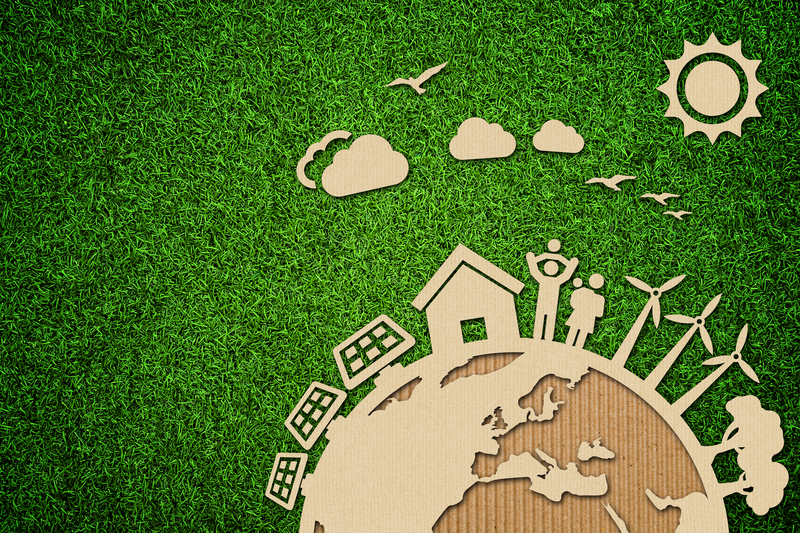Rethinking Waste Management to Eliminate Microplastics
Microplastics have become one of the most pervasive and insidious pollutants threatening our ecosystems, human health, and future generations. As scientists deepen their understanding of these tiny contaminants, it is increasingly clear that rethinking waste management is crucial to eliminate microplastics at their source. This comprehensive guide explores the impact of microplastics, unveils how current waste systems contribute to the problem, and outlines bold, innovative strategies for eradicating microplastics from our environment.
Understanding the Microplastics Challenge
Before addressing solutions, it's essential to grasp precisely what microplastics are, their diverse sources, and why tackling them within waste management is so urgent.
What are Microplastics?
- Primary microplastics: Intentionally manufactured at small sizes (e.g., microbeads in cosmetics, industrial abrasives).
- Secondary microplastics: Result from the breakdown of larger plastic objects, such as bottles, bags, and synthetic textiles, due to environmental processes.
Microplastics are typically defined as plastic fragments less than 5mm in diameter. Their small size enables them to bypass conventional waste management barriers and wastewater treatment systems.
Why Are Microplastics Problematic?
Microplastics do not biodegrade easily and can persist in the environment for hundreds of years. They have been found in oceans, rivers, soils, the air we breathe, and even the food we eat. These persistent pollutants can act as carriers for toxic chemicals and pathogens, posing risks to wildlife and humans alike.

The Role of Waste Management in Microplastic Pollution
The majority of plastic entering the environment originates from inadequate or mismanaged waste streams. Current systems are not optimized to prevent microplastics from forming or escaping into nature.
How Traditional Waste Management Fails
- Landfills and open dumps: Plastics break down under UV light, weather, and physical processes, releasing microplastics into the soil and groundwater.
- Wastewater treatment plants: These facilities are not designed to capture smaller microplastics, which consequently flow into rivers and oceans.
- Incineration: While incineration reduces plastic volume, incomplete combustion can release microplastic particulates into the air.
- Recycling contamination: Inefficient sorting allows small plastic fragments and microplastics to slip through and contaminate recycled goods.
Key Sources of Microplastics within Waste Streams
- Plastic packaging waste breaking down over time
- Laundry wastewater containing synthetic fibers from clothes
- Automotive tire particles washed off urban surfaces into drainage systems
- Personal care products containing microbeads flushed down drains
These sources highlight why rethinking microplastic waste management is essential to address the problem at multiple points in the waste lifecycle.
Innovative Strategies for Eliminating Microplastics from Waste Streams
Moving from a reactive to a proactive stance in waste management for microplastics elimination involves systemic changes. Here are some effective approaches:
1. Source Reduction and Substitution
Prevention is more effective than remediation. To stop microplastics before they enter waste streams, consider the following:
- Ban microbeads in personal care and cosmetic products.
- Promote plastic-free packaging solutions (e.g., paper, bioplastics, reusable containers).
- Encourage eco-design of products to minimize shedding and fragmentation.
- Support textiles made from natural fibers (e.g., cotton, wool) over synthetics.
These measures directly reduce the potential for the formation of new microplastics, shrinking the scale of the problem at its origin.
2. Advanced Wastewater Treatment Technologies
Wastewater is a major pathway for microplastics to enter aquatic environments. Upgrading treatment plants can make a significant difference by:
- Installing finer filtration and membrane systems capable of capturing particles down to the micron level.
- Using biological treatments (biofilms, algae) that trap or break down microplastics.
- Developing high-efficiency sludge management to prevent microplastics in biosolids from reaching farmland.
These engineering solutions are crucial for urban areas with dense populations and high plastic use.
3. Enhanced Solid Waste Processing
- State-of-the-art sorting technologies using optical sensors can separate microplastic-containing waste with higher accuracy.
- Pneumatic and hydro-cyclone systems can help extract plastics from mixed waste.
- Promoting decentralized composting schemes that avoid contamination with plastics.
Ensuring that microplastics never leave the processing site is essential for long-term environmental protection.
4. Innovations in Textile and Tire Waste Management
- Mandatory microfiber filters in domestic and industrial washing machines.
- Rubber collection systems along urban runoff channels to trap tire-derived microplastics.
- Technology incentives for tire and textile manufacturers to innovate less-shedding materials.
These sector-specific interventions can significantly reduce two of the largest sources of secondary microplastics.
5. Public Policy and Producer Responsibility
Legislation plays a pivotal role in transforming waste management for microplastics elimination. Approaches include:
- Extended Producer Responsibility (EPR) laws, mandating manufacturers to bear cradle-to-grave costs of their plastics.
- Eco-labeling for products and materials with lower microplastic shedding rates.
- Strict import/export controls on high-risk microplastic sources.
- Tax incentives for companies investing in microplastic mitigation.
With robust policy frameworks, corporate behavior aligns with public and environmental health goals.
The Path toward Zero Microplastic Waste
Rethinking waste management to eliminate microplastic pollution requires a paradigm shift--a move away from a linear, "take-make-waste" economy to a circular, regenerative model:
Embracing the Circular Economy
- Design products for durability, reuse, and recyclability.
- Incentivize the return and refurbishment of plastic goods.
- Develop markets for secondary raw materials, reducing virgin plastic demand.
- Create closed-loop supply chains that minimize waste leakage.
Standardizing Monitoring and Research
Without thorough monitoring, progress is impossible to measure. Key recommendations include:
- Establishing international standards for microplastic detection in waste streams.
- Funding research into the health and ecological impacts of microplastics.
- Encouraging industries to disclose microplastic emissions through transparent reporting.
Science-based solutions remain at the heart of successful microplastic management.
Community Engagement and Education
Raising awareness and fostering behavioral change are indispensable:
- Educational campaigns about reducing single-use plastics and responsible disposal.
- Community action groups engaging in plastic cleanup drives, repair workshops, and policy advocacy.
- Incentives for consumers to choose low-shedding products and support responsible brands.
Empowering individuals and communities creates a ripple effect--spurring industries and governments to act.

Global Examples of Microplastic Elimination in Action
To demonstrate the feasibility of these strategies, let's look at inspiring case studies:
- Sweden has pioneered advanced membrane technology in wastewater plants, eliminating up to 99% of microplastics before discharge.
- France passed legislation requiring all new washing machines to be fitted with microfibre filters by 2025.
- Canada has outlawed microbeads in toiletries and encourages producer responsibility for plastics.
- The Netherlands tackles tire wear microplastics through extensive monitoring and innovative road surface designs.
Each of these examples shows that determined policies, combined with technological innovation and public commitment, can drastically reduce microplastic pollution through smarter waste management.
Conclusion: Time to Rethink and Act
In summary, eliminating microplastics from our environment is no longer just an aspiration--it's an ecological necessity. Rethinking waste management is the linchpin for removing this pervasive pollutant from our world. The transition requires coordinated action from policymakers, industries, scientists, and citizens alike.
- Integrate prevention at the source, including product redesign and responsible consumption.
- Upgrade infrastructure, so microplastics are captured and disposed of safely.
- Adopt holistic policy frameworks, fostering innovation and accountability across sectors.
- Educate and engage society, empowering every individual to be part of the solution.
The war on microplastic pollution begins in our waste bins--and with each conscious decision we make. Let's seize this moment to build cleaner waste management systems, eliminate microplastics, and ensure a healthier planet for all.